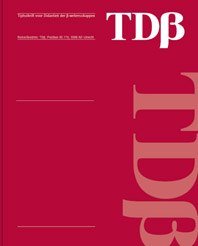Knelpunten en toekomstmogelijkheden voor de wiskunde in het VO

Tijdschrift voor Didactiek van de Beta-wetenschappen, uitgegeven door het Freudenthal Instituut, Universiteit Utrecht in de periode 1983-2014 |
Goddijn, A. Kindt, M. Tijdschrift voor Didactiek van de Beta-wetenschappen |
Bottlenecks and perspectives for mathematics in secondary education.
The article identifies some major problems in the secondary mathematics curriculum with a special focus on the traditional fields of algebra and geometry. One of the problems concerns upper secondary students’ competence in algebra, which is generally too low for a succesful treatement of subjects like calculus; a.o. factors, this is caused by recent reforms in the lower secondary curriculum. The authors propose that this problem cannot be solved by merely adding exercises to the lower secondary curriculum, but a shift of attention from ‘realistic graphs’ to number relations and their visualisation should be considered. This would provide a natural way to strengthen the basic concept of variables and the more formal handling of expressions at the same time, so that exercises become connected with problem situations and are less likely to evoke meaningless manipulation. Another major source of problems is in the geometry curriculum. The geometry curriculum in the Netherlands takes the exploration of natural space as a starting point. It is generally felt that this part of the curriculum works well for the average and below average students, but also that the approach poses too little challenges to the more able ones. It is only near the end of the secondary curriculum that some time is spent on formal proofs, and currently, this is only for a small minority of the students. The authors argue for the use of more demanding realistic and formal geometry problems for the more able students in junior high school, for an increase in the use of computer programs such as Cabri in both lower and upper secondary education, and for the use of modern advanced applications of geometry in upper secondary education. Moreover, they argue that a stronger connection between the geometry and the algebra curricula would have benifits for both. Based on their view that mathematics is a continuing process of reflection, and that arguing and listening are crucial activities if the students are to go reflecting themselves, the authors conclude with a warning against the trend to reduce the time available for teacher-student interaction, a trend which is strongly reflected in the ongoing reforms in Dutch upper secondary education.
U moet ingelogd zijn om een reactie te kunnen plaatsen.


